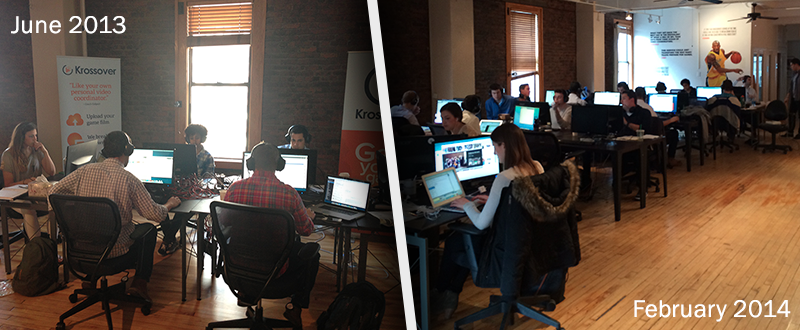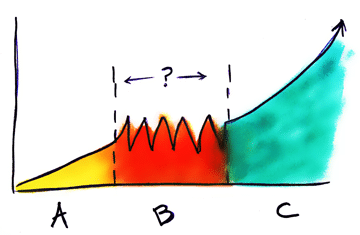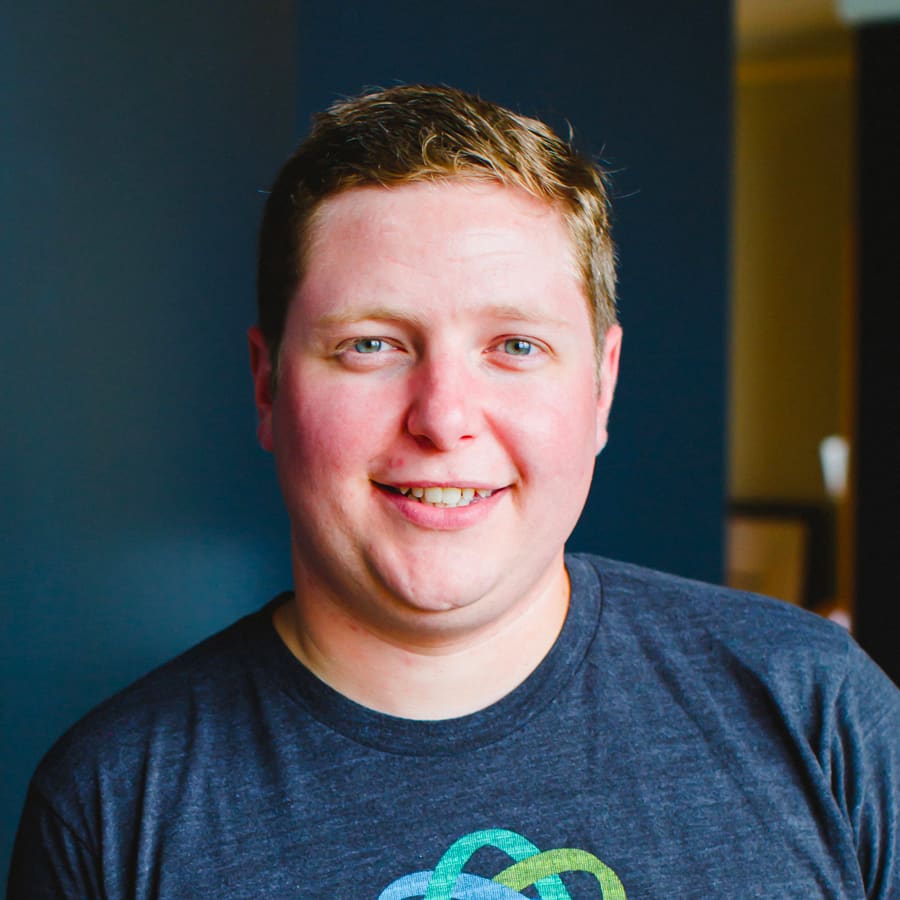Tools of the Trade: Outbound Sales
"Tools of the Trade" is a series of posts that cover all of the services and processes we use on the sales team at Krossover. Make sure you check out Part 1 and Part 2.
Outbound sales helped us grow our sales & marketing team by 4X in just nine months. Here's a picture of what that growth looks like:

In part three of my "Tools of the Trade" series, I'll cover how we handle outbound sales at Krossover. Outbound sales is the most difficult part of any company's sales process, and it requires a scientific approach to really do it right. The information below could help you establish benchmarks for evaluating success for an individual sales rep, the overall team, and determine the feasibility of continuing outbound sales.
Required Reading: Predictable Revenue

Most of the writing about outbound sales for SaaS companies refer to a book by Aaron Ross called Predictable Revenue. Aaron Ross was the man responsible for launching Salesforce's outbound sales department from nothing and turning it into over $100 million in recurring revenue for the company. I highly recommend this book, and it's a book we give every new sales rep that joins Krossover.
Outbound Lead Sources
A good outbound sales process begins with your leads. Krossover is fortunate to have a straight forward prospect list. All we have to do is source the contact information for teams at every High School and College. The hard part for us is reaching those contacts and keeping the information current. More on that later.
For those of you that are looking to reach out to more complicated verticals such as specific people within a large organization, you need to try everything.
Examples of "trying everything" could be:
- Buy a list from somewhere. (Check out Data.com)
- Have your sales reps source leads themselves.
- Have offshore resources (oDesk, TaskUs) source lead lists.
- Build a lead list and have the company contact information for just the main phone line. Call asking for "the person in charge of X".
Once you establish a number of lead sources, it's important to evaluate how effective each source is. You should also look to take sourcing out the hands of your sales reps as soon as possible. We always try to avoid any sales reps sourcing or importing leads into the CRM. It takes away from their sales time, and it's a task that can be easily outsourced.
When you import all of these leads in your CRM, be sure to tag the source of each lead. This will allow you to look back and figure out which lead sources performed the best.
Establish A Conversion Funnel
In outbound sales, the conversion funnel is an integral part to really understanding if your team can sustain an outbound sales campaign profitably.
Costs To Think About
When evaluting cost vs. revenue in outbound sales, look at your cost over the average sales cycle for your product. If you just look at your cost for the length of your sales cycle, you will be able to concentrate on looking at a sample size or "batch" of opportunities in your sales pipeline. It's easier to calculate.
Let's say your average sales cycle is six weeks. Here's what you should be factoring into your costs:
- Outbound sales rep base salary for 6 weeks
- Lead sourcing cost for 6 weeks / number of leads = cost per lead
- Cost per lead X number of deals closed = Lead cost per deal
Build A Sales Funnel, AKA "The Billy"
I will demonstrate below how to build a conversion funnel over the course of a six week sales cycle, and figure out if outbound sales will be sustainable using something we call "The Billy" formula.
Let's say Billy is your outbound sales rep, tasked with the job of creating a profitable outbound sales campaign in six weeks:
- Billy makes 1000 calls/emails.
- Billy confirms 100 of the leads he called. (10% reach rate**)
- Billy turns 50 of the confirmed leads into opportunities (50% opportunity rate**)
- Of those 50, Billy closes 10 of those opportunities (20% close rate**)
What was the value on those 50 opportunities? Let's say $100/mo paid annually:
- $1200/year x 50 opportunities = $60,000 pipeline value
- Billy closed 10/50, equaling $12,000 in annual revenue
- Billy got paid $4,038.46 in salary during the 6 weeks ($35k base)
- Billy makes 20% commission = $12k x 20% = $2,400
Now we need to figure out the total cost per deal:
- Cost for Billy: $4,038.40/base + $2,400 comm. = $6,438.46
- Billy closed 10 deals = $6,438.46 / 10 = $643.84
Over six weeks of outbound sales, it cost you $643.84 for Billy to close each of his 10 deals. We also have to account for the 1000 leads that were sourced for Billy:
- 1000 leads X $3 per lead = $3,000 total lead cost
- $3,000 / 10 closed deals by Billy = $300 per closed deal
This brings our grand total to $943.84 ($643.84 + $300 per lead) to close a deal over the course of six weeks.
Here comes the fun part:
- Total Revenue From Billy: $12,000
- Total Sales Cost From Billy: $943.84 x ($300 x 10 deals) = $9,438.40
- $12,000 revenue - $9,438.40 cost = $2,561.60 profit
If Billy continues to have the same conversion rates every 6 weeks, you can predict that Billy will be a profitable outbound sales rep. Good job Billy!

** A "good" conversion rate varies by product, sales cycle, and deal value. The above conversion rates are common for SaaS products with high volume and a deal value of $100/month recurring revenue. In outbound cold calling, a 10% reach rate is what you should aim for.
What if Billy isn't profitable?
In the scenario where Billy is not profitable, which is often the case, the "The Billy" formula outlined a sales conversion funnel at each stage of a deal.
You should look at each stage or conversion metric, and start to play with the conversion rates - plugging in new numbers:
- What if Billy increased his call volume by 20%?
- What if you find a lead source that helped Billy confirm 10% more leads?
- What if we could help Billy close one more deal out of his pipeline? (Discounts, training, etc)
Plugging in these new conversion numbers will help your team figure out the point at which your outbound sales campaign becomes profitable. The new conversion numbers should immediately become the goals Billy needs to hit each week.
Focus On Your Weakest Conversion Rate
For our sales team, the most difficult part of our outbound sales funnel is our reach rate. Because we are calling high schools and colleges, we often find coaches are off campus or teaching a class.
This causes us to constantly ask ourselves: "What can we do to increase our reach rate?"
Our team is very talented at making it happen once we get the opportunity to talk to a coach. We also have a badass product. We use our reach rate to be the deciding factor if we need to make a change with lead sources and/or try other strategies. We look at the reach rate over the course of 2-3 days, and make changes as needed.
Scaling Outbound Sales
Using "The Billy" example, we established that Billy would be a profitable outbound sales rep if he kept the above conversion rates intact.
Now the question becomes: How do we add another Billy?
Adding another Billy is a question of duplication. Can you easily duplicate everything it took for Billy to achieve those results? Can you get 1000 more leads that have the same results for a second sales rep? Is the vertical/market big enough for two reps to perform at the same level? Can you foot the bill while the new sales rep trains and gets to Billy's level of success?
All of these questions should help you answer how large you'll be able to scale your outbound sales team. An important thing to keep in mind is that you still have inbound to fall back on. If you are a small startup trying to make outbound sales happen, be sure to have a percentage of your sales reps' pipeline originate from inbound. That will keep them balanced in cost vs. profit.
Having a good inbound-to-outbound pipeline ratio will spread out the total cost of a sales rep, mix up the difficulty of selling your product (it should be easy sometimes), and hopefully help them make the money you promised them when they interviewed.
Need help building your own "Billy" formula? Email me at nick@krossover.com, I'd be happy to help!

